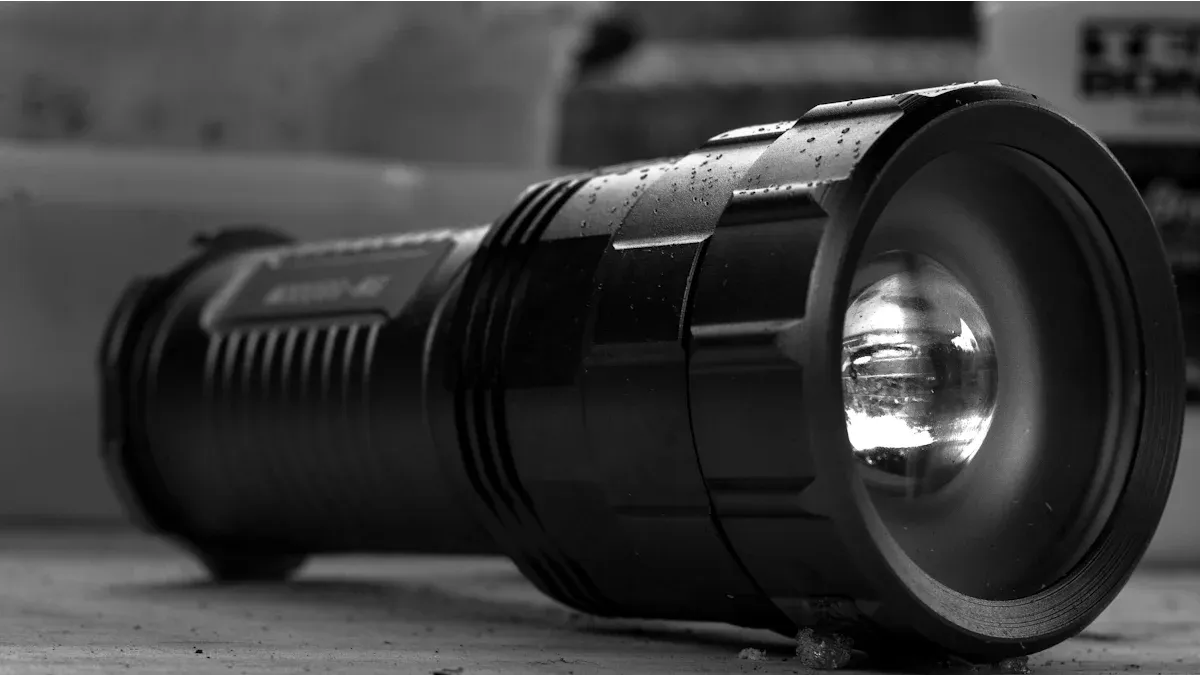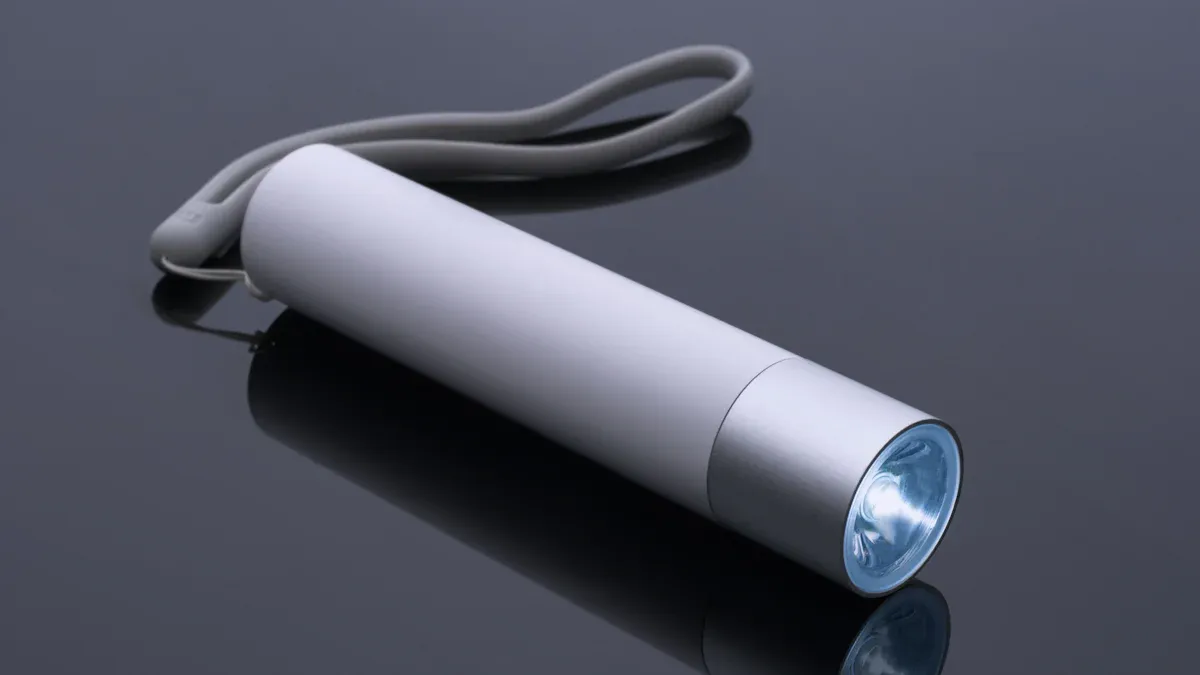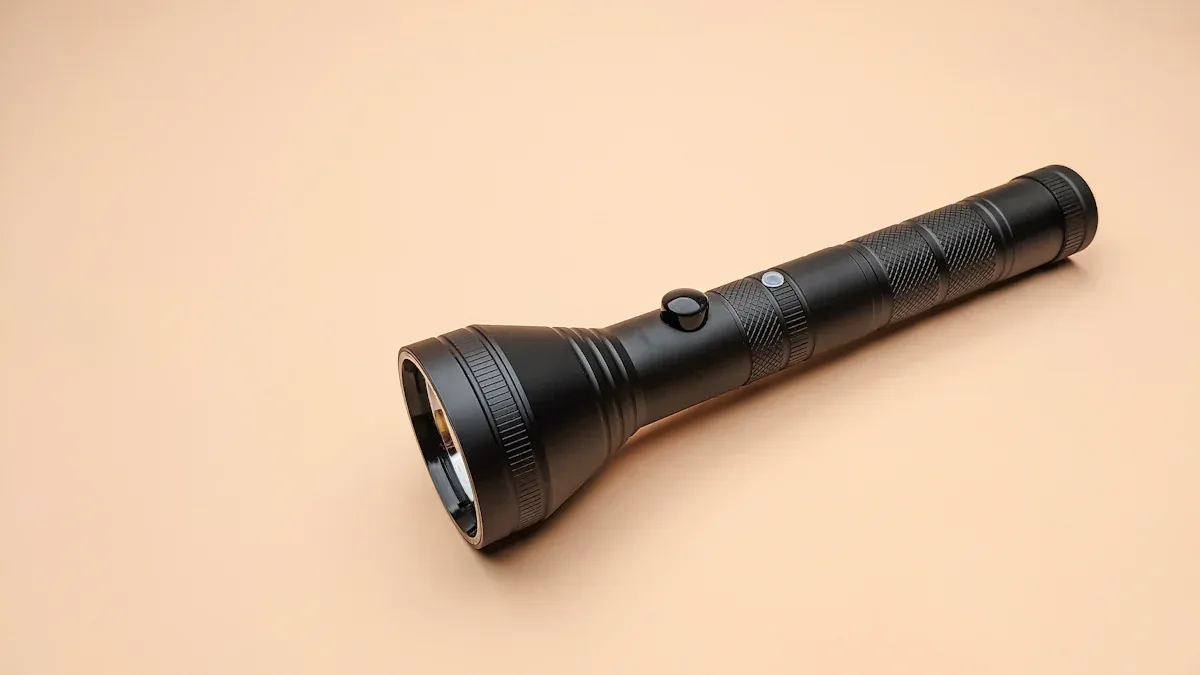How to Choose the Right Battery for Your Flashlight and Headlamp

When it comes to your flashlight or headlamp, the battery you choose can make all the difference. A good flashlight battery ensures your light stays bright when you need it most. Whether you're camping, working late, or just dealing with a power outage, the right battery keeps your flashlight reliable. You don’t want to risk a dim beam or a dead light at the worst moment. Even high-quality options like a helius flashlight depend on the right power source to perform at their best. So, picking the right one isn’t just smart—it’s essential.
Key Takeaways
Pick the right battery for your flashlight's needs. Alkaline batteries work well for rare use, while lithium-ion ones last longer and perform better.
Always follow the maker's rules for battery use. This keeps your flashlight safe and working properly without harm.
Use rechargeable batteries if you use your flashlight a lot. They save money over time and are better for the planet than throwaway ones.
Check how long the battery lasts and how bright it is. Bigger batteries like 18650 last longer and shine brighter, especially in tough conditions.
Make sure the battery size and voltage fit your flashlight. Wrong sizes can cause bad performance or damage, so always double-check.
Types of Batteries for Flashlights and Headlamps

When choosing a flashlight battery, understanding the different types available can help you make the best decision. Let’s break down the most common options.
Disposable Batteries
Alkaline Batteries
Alkaline batteries are the go-to choice for many flashlights. They’re affordable, widely available, and offer decent performance for everyday use. These batteries typically provide 1.5 volts and have a capacity ranging from 1500mAh to 3000mAh. However, they’re non-rechargeable, so you’ll need to replace them once they’re drained. If you’re using your flashlight occasionally, disposable alkaline batteries are a convenient option.
Lithium Batteries
Lithium batteries are a step up from alkaline. They’re lighter, last longer, and perform better in extreme temperatures. These batteries also have a longer shelf life—up to 15 years—making them ideal for emergency flashlights. While they cost more upfront, their reliability in critical situations makes them worth considering.
Rechargeable Batteries
Nickel-Metal Hydride (NiMH) Batteries
NiMH batteries are a popular rechargeable option. They’re eco-friendly and can be reused hundreds of times, saving you money in the long run. These batteries maintain consistent brightness levels, unlike disposable ones that dim as they drain. However, they may lose charge if left unused for extended periods.
Lithium-Ion (Li-ion) Batteries
Lithium-ion batteries are a powerhouse for flashlights. They offer high energy density, a low self-discharge rate, and exceptional performance in various conditions. Their ability to handle many charge cycles without significant capacity loss makes them perfect for frequent flashlight users. Just remember to use a compatible charger to avoid safety risks.
Specialty Batteries
CR123A Batteries
CR123A batteries are compact and deliver high voltage, making them ideal for tactical flashlights. They’re non-rechargeable but provide a long runtime and reliable performance.
18650 Batteries
18650 batteries are rechargeable and known for their high capacity. They’re commonly used in high-performance flashlights, offering excellent runtime and brightness. These batteries are a favorite for outdoor enthusiasts and professionals.
How to Choose Batteries According to Flashlight Types
Understanding Flashlight Battery Compatibility
Matching Voltage and Size Requirements
When choosing a flashlight battery, matching the voltage and size is crucial. Batteries that don’t fit properly can damage your flashlight or fail to work altogether. To make the right choice:
Check the battery size to ensure it fits snugly in the compartment.
Match the voltage requirements of your flashlight. For example, AA and AAA batteries typically provide 1.5V, while CR123A batteries deliver 3V.
Verify if your flashlight needs specific holders or adapters for certain batteries.
Here’s a quick reference table for common battery sizes and voltages:
Battery Size | Common Voltage |
|---|---|
AA | 1.5V |
AAA | 1.5V |
CR123A | 3V |
18650 | 3.7V |
Checking Manufacturer Guidelines
Always consult the manufacturer’s guidelines before selecting a flashlight battery. These recommendations ensure you choose batteries that are compatible with your flashlight’s design and performance needs. Ignoring these guidelines could lead to reduced brightness or even permanent damage.
Evaluating Battery Performance
Runtime and Brightness Considerations
Battery performance directly impacts your flashlight’s runtime and brightness. Larger batteries, like the 18650 battery, offer higher capacity, which means longer runtime before needing a recharge or replacement. They also provide more power to the LED, resulting in a brighter beam. If you need consistent brightness for extended periods, rechargeable lithium-ion batteries are an excellent choice.
Performance in Extreme Conditions
If you’re using your flashlight in extreme temperatures, battery performance becomes even more critical. Cold climates can reduce power output, while high temperatures may cause overheating and faster degradation. Lithium-ion batteries perform well in these conditions, making them a reliable option for outdoor adventures or professional use.
Cost and Environmental Impact
Balancing Cost with Long-Term Value
Balancing cost and long-term value is essential when choosing a flashlight battery. Rechargeable batteries, like Ni-MH or lithium-ion, may cost more upfront but save money over time. For frequent users, rechargeable lithium-ion batteries eliminate the need for constant replacements, making them a cost-effective solution. Businesses, for instance, can save thousands annually by switching to rechargeable options.
Benefits of Rechargeable Batteries for Sustainability
Rechargeable batteries aren’t just cost-effective—they’re also better for the environment. Disposable batteries contribute significantly to landfill waste and pollution. In contrast:
Rechargeable batteries can be reused hundreds of times.
Recycling them recovers valuable materials, reducing resource depletion.
Disposable batteries often lead to harmful chemical pollution, while rechargeable options drastically reduce waste and environmental impact.
By considering these factors, you can make an informed selection that benefits both your wallet and the planet.
Tips for Selecting the Best Flashlight Battery

Check Manufacturer Recommendations
Always start by checking the manufacturer’s recommendations for your flashlight. These guidelines help you pick the right battery type for optimal performance. Many compact flashlights work well with alkaline batteries because they’re affordable and easy to find. Tactical flashlights often require lithium batteries for their longer runtime and reliability. If you’re using a rechargeable flashlight, manufacturers usually suggest NiMH batteries for their reusability and eco-friendly benefits. Following these recommendations ensures your flashlight operates safely and efficiently.
Match Battery Type to Usage
Everyday Carry (EDC) Flashlights
For EDC flashlights, portability and convenience are key. Smaller batteries like AA or AAA are common choices. They’re lightweight and easy to replace, making them perfect for daily tasks. Rechargeable options like NiMH or lithium-ion batteries are also great if you use your flashlight frequently. They provide consistent brightness and save you money over time.
Outdoor and Professional Use
Outdoor and professional flashlights demand high performance. If you’re exploring the wilderness or working in harsh conditions, you need batteries that can handle the challenge. High-capacity rechargeable lithium-ion batteries are ideal for these scenarios. They offer extended runtime and maintain brightness even in extreme temperatures. Tactical flashlights often use 18650 or 21700 batteries for their compact size and powerful output. For search and rescue operations, larger batteries like 26650 or 32650 provide the endurance and brightness you need.
Flashlight Type | Battery Type Used | Key Features |
|---|---|---|
Handheld EDC Flashlights | AA to 18650 | Prioritize portability and functionality |
Outdoor Exploring Flashlights | High-capacity rechargeable lithium-ion | Focus on runtime and brightness |
Tactical Flashlights | 18650 or 21700 | Designed for military/police use, compact size |
Search and Rescue Flashlights | 18650, 26650, or 32650 | Built for brightness and endurance |
Consider Rechargeable Options
Benefits for Frequent Users
Rechargeable batteries are a smart choice if you use your flashlight often. They save you money in the long run since you can reuse them hundreds of times. They’re also environmentally friendly, reducing waste from disposable batteries. Rechargeable batteries maintain consistent brightness and are built to last, even in tough conditions. Many models include energy-saving features like adjustable brightness settings, which enhance their efficiency.
Choosing the Right Charger
A good charger is essential for keeping your rechargeable batteries in top shape. Look for chargers with features like LED screens that display battery percentage and voltage. These make it easier to monitor your battery’s health. Some chargers also offer internal resistance testing and capacity displays, which help you understand how much charge your battery can hold. Choosing a charger with these features ensures your batteries stay reliable and safe to use.
Choosing the right battery for your flashlight or headlamp ensures it performs when you need it most. Start by considering the type and size of the battery your flashlight can handle. Think about how often you’ll use it and whether rechargeability fits your needs. If you’re heading into extreme conditions, pick a battery that can handle the challenge. Rechargeable batteries are a great choice for frequent use, saving you money and reducing waste. By prioritizing compatibility, performance, and your specific needs, you’ll always have a reliable light source when it matters.
💡 Tip: Rechargeable batteries not only last longer but also help protect the environment by cutting down on disposable waste.
FAQ
What type of battery is best for flashlights?
The best battery depends on your flashlight and usage. For everyday use, alkaline batteries work well. For high-performance needs, li-ion batteries are ideal. They offer longer runtime and consistent brightness. Rechargeable li-ion batteries are perfect for frequent users.
Can I use rechargeable batteries in all flashlights?
Not all flashlights support rechargeable batteries. Check the manufacturer’s guidelines to confirm compatibility. Many modern flashlights are designed for li-ion batteries, which are rechargeable and efficient. Always ensure the voltage matches your flashlight’s requirements.
How do li-ion batteries compare to other types?
Li-ion batteries outperform most other types. They last longer, recharge quickly, and maintain brightness. They’re also lightweight and work well in extreme conditions. If you use your flashlight or headlamp often, li-ion batteries are a great choice.
Are lithium-ion batteries safe to use?
Yes, lithium-ion batteries are safe when used correctly. Always use a compatible charger and avoid overcharging. Store them in a cool, dry place. Following these steps ensures your li-ion batteries stay safe and reliable.
What’s the best battery for headlamps?
For headlamps, li-ion batteries are a top choice. They’re lightweight, rechargeable, and provide consistent power. If you’re using your headlamp for outdoor activities, li-ion batteries ensure long runtime and reliable performance.
See Also
Selecting The Best Battery For Your Flashlight
Guidelines For Picking The Perfect Headlamp Flashlight
Tips For Selecting A High-Powered Flashlight
